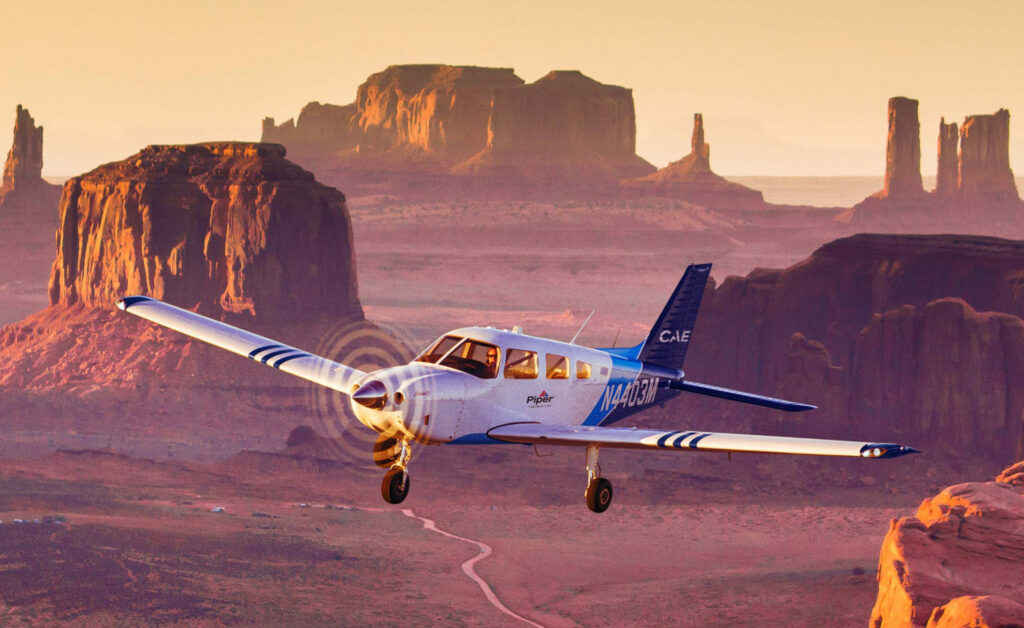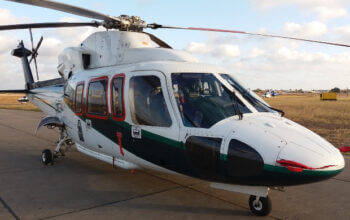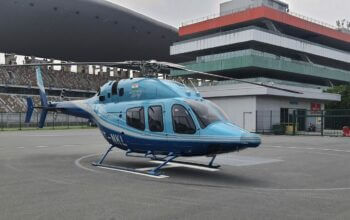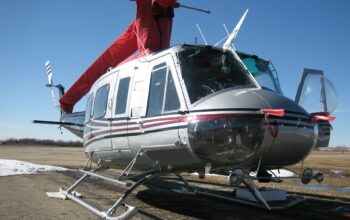Estimated reading time 8 minutes, 4 seconds.
The aerospace industry’s efforts to reduce its carbon footprint are being closely monitored by aerospace schools in Quebec, which are striving to keep up through more eco-conscious research projects.
“We work closely with OEMs and their green initiatives in terms of composites, metals, and motors,” said Katia Crasnich, associate director of École des métiers de l’aérospatiale de Montréal (Montreal School of Aerospace Trades).
The school teaches students how to assemble fixed- and rotary-wing aircraft, and offers courses in precision sheet metal work; cable and circuit assembly; aerospace structural assembly; aerospace mechanical assembly; and machining. Courses range from 840 hours to 1,800 hours, depending on the specialty.

Crasnich noted that there is a growing concern for ethics and environmental progress in aerospace.
“A few weeks ago, all trade schools were invited to a training day at Bombardier [to talk about] the green shift and technological advances,” she said.
However, the institute collaborates with the entire aerospace industry, not just the major players.
“In the media, we hear mainly about the big names in the industry, but there are many companies in the greater metropolitan area that need our specialized students,” she said. “We are privileged to have strong partnerships with many companies, especially by hosting our students on internships — which allows them to practice the skills developed during their training. Our teachers are also trainers in companies for advanced training and customized training, and are aware of all the new technologies and new materials. [They] integrate this knowledge in their courses and practices.”
There is no lack of work for graduates, according to Crasnich, due to a critical shortage of workers throughout the industry. “We receive job offers for our students every day. Students are hired before they graduate or at the time of their internship. There is a 100 percent placement rate for our graduates.”
Enrolment at her institute is currently around 250 students, down from about 350 — which Crasnich attributes to Covid-19 and the dilemma for some potential students to choose between school or working. But those numbers should improve.
Over the next 10 years, the Quebec aerospace sector will have to fill 34,073 new positions, according to the latest survey by the Aerospace Workforce Sector Committee. That’s almost as many as the approximately 36,000 employees in the industry today. Airbus, for example, just announced its plans to hire 800 more workers this year in Canada, including 700 in Quebec, as it looks to double production of the A220 at Mirabel to about 10 aircraft a month.
Future recruits will be fully involved in the implementation of the environmental transition of the aerospace industry, including new propulsion techniques, green fuels, and aerodynamics, noted Crasnich.
l’école nationale d’aérotechnique, or ENA (National School of Aerotechnics) — which teaches students how to repair and maintain aircraft — is also keeping up with the green movement.

“We are in the process of purchasing equipment and having the infrastructure to test hybrid and electric motors,” explained Pascal Désilets, director of the school — which offers a three-year program with about half the graduates going on to university, and the remainder joining the workforce.
Some machines used to move airplanes, called Mules, are starting to go electric. “These are the first ones we will have,” noted Désilets.
In addition, both students and teachers are involved in various applied research projects, which allows them to “bring this wealth of knowledge” to the job market.
Désilets feels there is “momentum towards eco-aviation.” He is enthusiastic, since the enrolment of future students in some sessions is up 40 percent compared to last year.
The new arrivals will be able to follow new training in robotics, in a new complete laboratory, or be part of the new wave of technicians called upon to “do programming according to the new aeronautical standards.”
From a perspective of sustainable development, the ENA also engages in the “eco-responsible dismantling of aircraft.”
During a full session, participants will “remove oils, hydraulic circuits, and motors, [and] dismantle anything that contains contaminants” in the device, then sink it to the bottom of a lake in a safe manner. It then becomes a site for practicing diving. The ENA has just done this with a helicopter near Thetford Mines, and it is starting the same process again with a Challenger aircraft.
The school’s research center is working on the electrification of a Piper Archer in collaboration with CAE. It is also developing a hybrid-electric engine with Pratt & Whitney Canada in addition to working with composites to improve fuel consumption.

“There is still no certified electric-hybrid aircraft in Canada, but there are a lot of projects working on it,” said Désilets. “Battery capacity is largely holding projects back.
“The ecological methods we use in training, and the way we teach, should help our graduates become change agents at the companies that hire them, which hopefully will improve sustainable development.”








